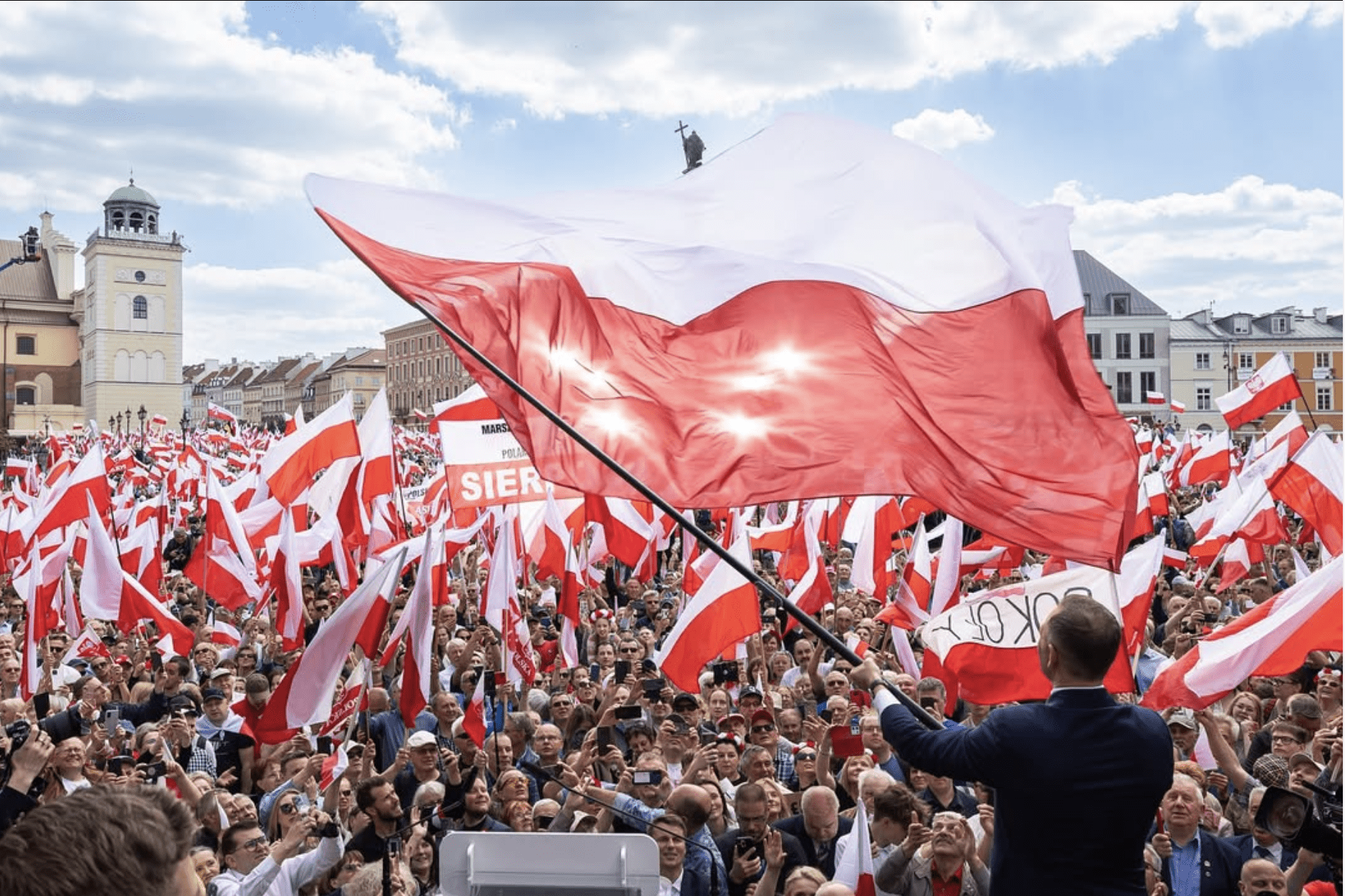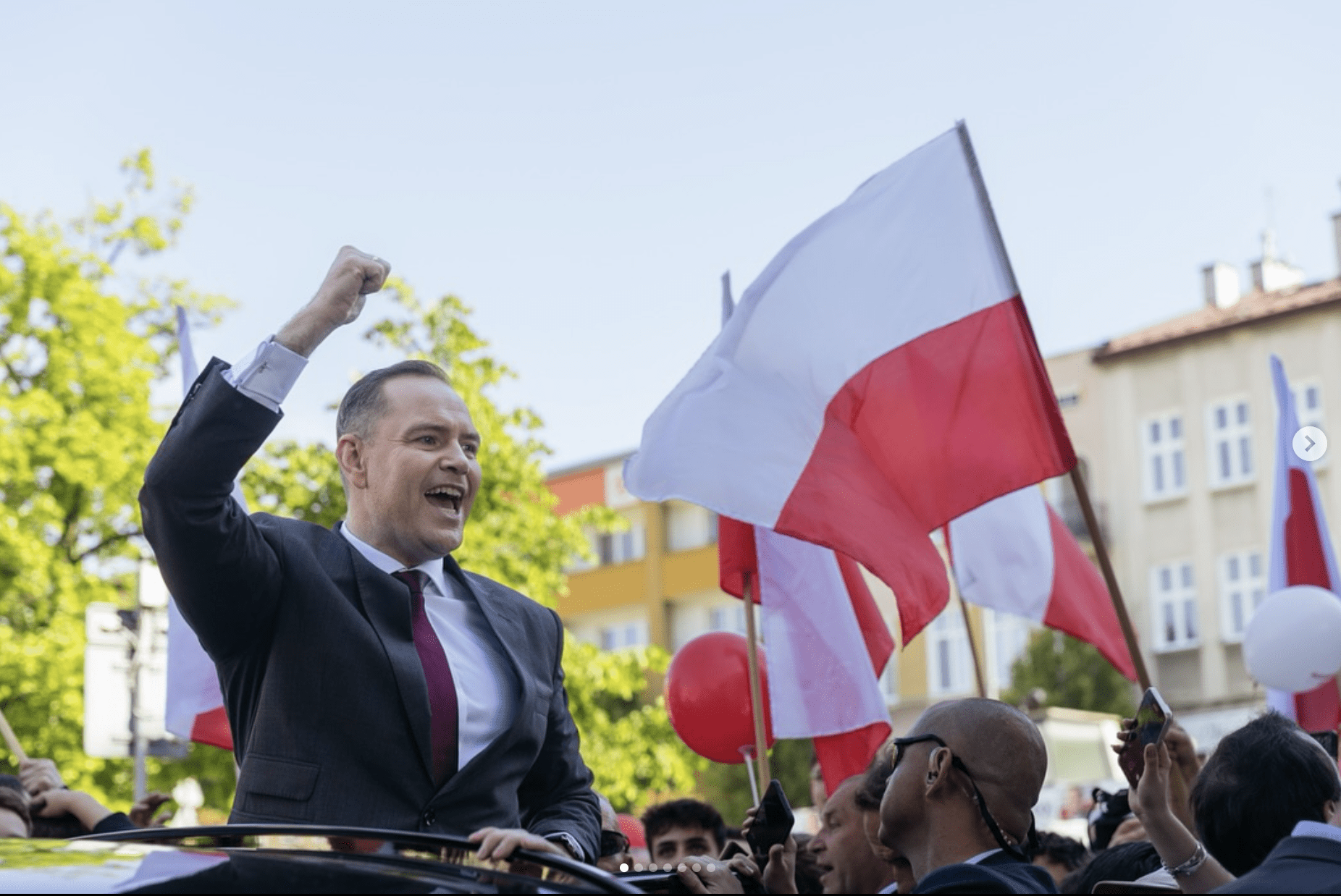Poland’s Presidential Election Reveals Deep Divisions with European and Global Implications
A political deadlock between a pro-European government and a euroskeptic president could weaken the country's standing within the EU and undermine the European response to Russia’s invasion of Ukraine. A commentary by Catherine De Vries

This past Sunday, Polish voters returned to the polls for the second round of the presidential election. The race was a showdown between two candidates who represent the country’s stark political and ideological divide: Karol Nawrocki, a conservative historian backed by the far-right opposition party Law and Justice (PiS), and Rafał Trzaskowski, the liberal and strongly pro-European mayor of Warsaw representing the Civic Platform (PO) of Prime Minister Donald Tusk.
The result was a razor-thin victory for Nawrocki, who secured just over 50 percent of the vote. This narrow win is not only a domestic setback for Tusk but also threatens to have wider repercussions both within the European Union and beyond.
Tusk’s return to power as prime minister in 2023, after previously serving from 2007 to 2014, was widely seen as a bid to re-anchor Poland within the European project.
His government promised reforms, especially in the area of the rule of law, following years of confrontational policies under PiS. But those ambitions now face a significant institutional roadblock.
While the Polish presidency is largely ceremonial, it still holds key powers: the president can veto legislation and influence foreign and defense policy.
Outgoing president Andrzej Duda, also aligned with PiS, had already used his veto to block Tusk’s reform efforts. With Nawrocki now set to occupy the presidential palace, such obstruction is expected to intensify rather than ease.
The implications of this election, however, stretch far beyond Poland’s borders. A political deadlock between a pro-European government and a euroskeptic president could stall Poland’s reform agenda and weaken the country's standing within the EU.
Moreover, it risks undermining the unity of the European response to Russia’s invasion of Ukraine.
Poland has played a leading role in this effort—providing humanitarian and military aid, and acting as a key diplomatic force on the EU’s eastern flank. Nawrocki, however, has repeatedly voiced skepticism about the scale and direction of this support. His victory could therefore place additional strain on Europe’s cohesion in backing Ukraine.
Poland’s outcome also reflects a broader global trend of political polarization. While far-right parties have recently lost ground in countries such as Canada, Australia, and Romania, where pro-European candidate Nicușor Dan convincingly defeated the far-right George Simion, Poland is shifting toward the conservative and nationalist camp. Rather than a decline of the radical right, the Polish election signals its consolidation.
Nawrocki’s win is a morale boost for the international movement surrounding former U.S. President Donald Trump.
After Trump-aligned candidates suffered defeats in several countries, Poland’s result gives renewed momentum to the global wing of the “Make America Great Again” agenda.
At CPAC Hungary, a gathering of right-wing and far-right politicians held days before the Polish vote, U.S. Secretary of Homeland Security Kristi Noem urged Polish voters to choose “the right leader” and called Trzaskowski “a train wreck” This kind of overt election interference is increasingly common in the Trump era and illustrates how closely Europe’s far right is now tied to American Trumpism.
The Trump Effect
This also reveals a paradox: while Trump undermines the credibility of multilateral institutions like NATO through his inflammatory rhetoric, he simultaneously creates political space for leaders who emphasize national sovereignty and identity.
His implicit message, that Europe is on its own, serves not only as a warning but also reinforces nationalist instincts.
Earlier this year, Trump declared that NATO countries that “don’t pay enough” could no longer count on U.S. support. The comment sparked panic in many European capitals.
For centrist leaders, it reinforced calls for stronger European defense cooperation. But on the political fringes, it was seen differently, as confirmation that nations must rely on themselves. In this context, Trzaskowski’s defeat symbolizes a larger battle over political narrative.
His pro-European message, rooted in cooperation, shared values, and rule of law, failed to convince enough voters that it could protect Poland from geopolitical threats. Nawrocki’s message of national control and sovereignty resonated more strongly.
The long-term threat from Russia, combined with Trump’s unpredictable leadership, has shaken Europe’s strategic reliance on decades of American protection.
The continent now faces the urgent task of rethinking its own security architecture. Ironically, it may be Trump’s very unpredictability that accelerates this process. But this requires political will, not only in Brussels but also in the capitals of EU member states. As long as parties like PiS maintain a grip on national institutions, Europe’s strategic shift remains fragile.
Thus, Poland’s election outcome serves as a warning to pro-European politicians. Without a compelling narrative on security, social protection, and national identity, pro-European parties will struggle to retain voter support.
The future of Europe will not be decided in Brussels alone, it hinges just as much on the electoral choices made in Warsaw, Bucharest, and other capitals.
The real impact of Trump, whether as a force that strengthens or weakens the European project, will ultimately be determined not in Washington but in the voting booths of Europe itself.
A previous version of this article was published by The Guardian

While Trump undermines the credibility of multilateral institutions like NATO through his inflammatory rhetoric, he simultaneously creates political space for leaders who emphasize national sovereignty and identity.
IEP@BU does not express opinions of its own. The opinions expressed in this publication are those of the authors. Any errors or omissions are the responsibility of the authors.
